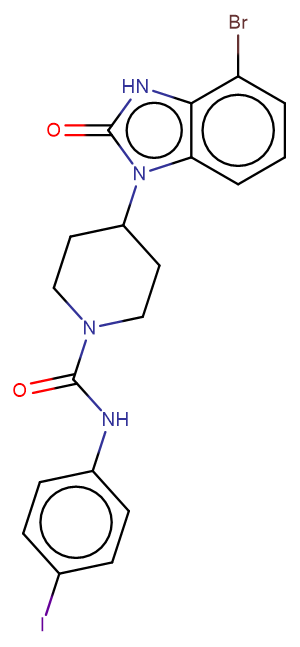
TH5487
CAS No. 2304947-71-3
TH5487( —— )
Catalog No. M21183 CAS No. 2304947-71-3
TH5487 is an potent inhibitor of 8-oxoguanine DNA glycosylase 1 (OGG1)( IC50 of 342 nM).
Purity : >98% (HPLC)
 COA
COA
 Datasheet
Datasheet
 HNMR
HNMR
 HPLC
HPLC
 MSDS
MSDS
 Handing Instructions
Handing Instructions
| Size | Price / USD | Stock | Quantity |
| 2MG | 51 | Get Quote |


|
| 5MG | 86 | Get Quote |


|
| 10MG | 147 | Get Quote |


|
| 25MG | 287 | Get Quote |


|
| 50MG | 520 | Get Quote |


|
| 100MG | 750 | Get Quote |


|
| 500MG | 1521 | Get Quote |


|
| 1G | Get Quote | Get Quote |


|
Biological Information
-
Product NameTH5487
-
NoteResearch use only, not for human use.
-
Brief DescriptionTH5487 is an potent inhibitor of 8-oxoguanine DNA glycosylase 1 (OGG1)( IC50 of 342 nM).
-
DescriptionTH5487 is an potent inhibitor of 8-oxoguanine DNA glycosylase 1 (OGG1)( IC50 of 342 nM).
-
In VitroRT-PCR Cell Line:Murine airway epithelial cell line (MLE 12); Diploid human small-airway epithelial cell (hSAECs) Concentration:5 μM Incubation Time:1 hour Result:Inhibited proinflammatory gene expression dose-dependently.Western Blot Analysis Cell Line:Murine airway epithelial cell line (MLE 12); Diploid human small-airway epithelial cell (hSAECs)Concentration:2.5 μM; 5 μM; 10 μM Incubation Time:1 hour Result:Decreased p50-p65 and p50-p50 expression in a dose dependent manner.
-
In VivoAnimal Model:Eightweek-old female and male BALB/c mice Dosage:8 mg/kg, 15 mg/kg, 30 mg/kg Administration:Prophylactic intraperitoneally injection; 8-30 mg/kg; 1-9 hours Result:Interrupted TNFα-induced ongoing inflammatory processes.
-
Synonyms——
-
PathwayOthers
-
TargetOther Targets
-
Recptor8-oxoguanine DNA glycosylase 1 (OGG1)
-
Research Area——
-
Indication——
Chemical Information
-
CAS Number2304947-71-3
-
Formula Weight541.18
-
Molecular FormulaC19H18BrIN4O2
-
Purity>98% (HPLC)
-
SolubilityDMSO:25 mg/mL (46.20 mM; Need ultrasonic)
-
SMILESO=C(Nc1ccc(I)cc1)N1CCC(n2c(=O)[nH]c3c(Br)cccc32)CC1
-
Chemical Name4-(4-Bromo-23-dihydro-2-oxo-1H-benzimidazol-1-yl)-N-(4-iodophenyl)-1-piperidinecarboxamide
Shipping & Storage Information
-
Storage(-20℃)
-
ShippingWith Ice Pack
-
Stability≥ 2 years
Reference
1.Visnes T et al. Small-molecule inhibitor of OGG1 suppresses proinflammatory gene expression and inflammation. Science. 2018 Nov 16;362(6416):834-839.
molnova catalog



related products
-
12-dioleoyl-sn-glyce...
12-dioleoyl-sn-glycero-3-phosphocholine is a phospholipid containing the unsaturated long-chain (18:1) oleic acid inserted at the sn-1 and sn-2 positions.?
-
N-Phenylacrylamide
N-Phenylacrylamide inhibit human recombinant TGM2 by fluorescent transamidation assay.
-
Cyclopentadecanone
Cyclopentadecanone Used in perfumery (musk odour).



 Cart
Cart
 sales@molnova.com
sales@molnova.com


